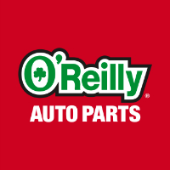-
Welcome to Auto Parts Forum
Whether you are a veteran automotive parts guru or just someone looking for some quick auto parts advice, register today and start a new topic in our forum. Registration is free and you can even sign up with social network platforms such as Facebook, X, and LinkedIn.
AmazonBasics 6-Pack High Mileage Motor Oil - Synthetic Blend
-
Similar Content
-
Similar Topics
-
By NAPA
High Limit Racing returned to full-time competition over the weekend with two stops the Lone Star State, and Brad Sweet earned a pair of top-five finishes in a strong restart for the
link hidden, please login to view No. 49 team. With Friday night’s program at Texarkana 67 Speedway canceled due to rain, Sweet and the No. 49 team made their way directly to Texas Motor Speedway for Saturday night’s show. With 49 days since his last race, the Big Cat was determined to make a mark on the series and the season. Sweet set the pace right from the start. During qualifying, the NAPA driver claimed the top spot with a blistering, 13.735-second lap.
As competition heated up, the five-time World of Outlaws champion continued to shine. Sweet finished third after starting fourth in his heat race and earned a ticket to the dash by being the fastest car in his heat. During the dash draw, Sweet drew fifth. He maintained his position over seven laps to line up fifth to start the feature. He again advanced during the evening’s feature race, crossing the line third for the final podium spot.
On Sunday, the No. 49 team traveled to Crandall, Texas, for another evening of High Limit Racing at RPM Speedway. Sweet wasted no time, showing again in qualifying the speed of the NAPA machine. Posting a lightning-fast lap time of 12.245 seconds, the Big Cat went to the top of the speed chart.
In his heat race, Sweet climbed from fourth to second, securing a spot in the dash. Starting in sixth place gave the team seven laps to perfect their setup for the main event. The NAPA driver advanced to fifth and locked in that spot for the start of the evening’s 30-lap main event.
The NAPA No. 49 team put forth their best effort as Sweet navigated the Crandall race track. Maintaining his position throughout the race, Sweet crossed the finish line in fifth for his second top-five finish on the weekend.
Start / Finish:
Saturday, April 13, Texas Motor Speedway: 5 / 3
Sunday, April 14, RPM Speedway: 5 / 5
Points Standing / Total: 2nd / 386 pts. (-18)
Next Race: Tuesday, April 16, Red Dirt Raceway, Meeker, OK
How to Watch or Listen:
link hidden, please login to view NAPA:
link hidden, please login to viewBrad Sweet: link hidden, please login to view
Kasey Kahne Racing: link hidden, please login to view The post
link hidden, please login to view appeared first on link hidden, please login to view.
link hidden, please login to view 
-
By Mighty Auto Parts
The post
link hidden, please login to view appeared first on link hidden, please login to view. When filters bulge, gaskets blow, or filters dislodge from their mounted position on the engine, the oil filter is almost always blamed. Some install the second or third filter still convinced the filter is the cause. The filter is the victim, as over pressurization is the reason for the event and these issues have plagued […]
The post
link hidden, please login to view appeared first on link hidden, please login to view.
link hidden, please login to view







Recommended Posts
Join the conversation
You can post now and register later. If you have an account, sign in now to post with your account.
Note: Your post will require moderator approval before it will be visible.